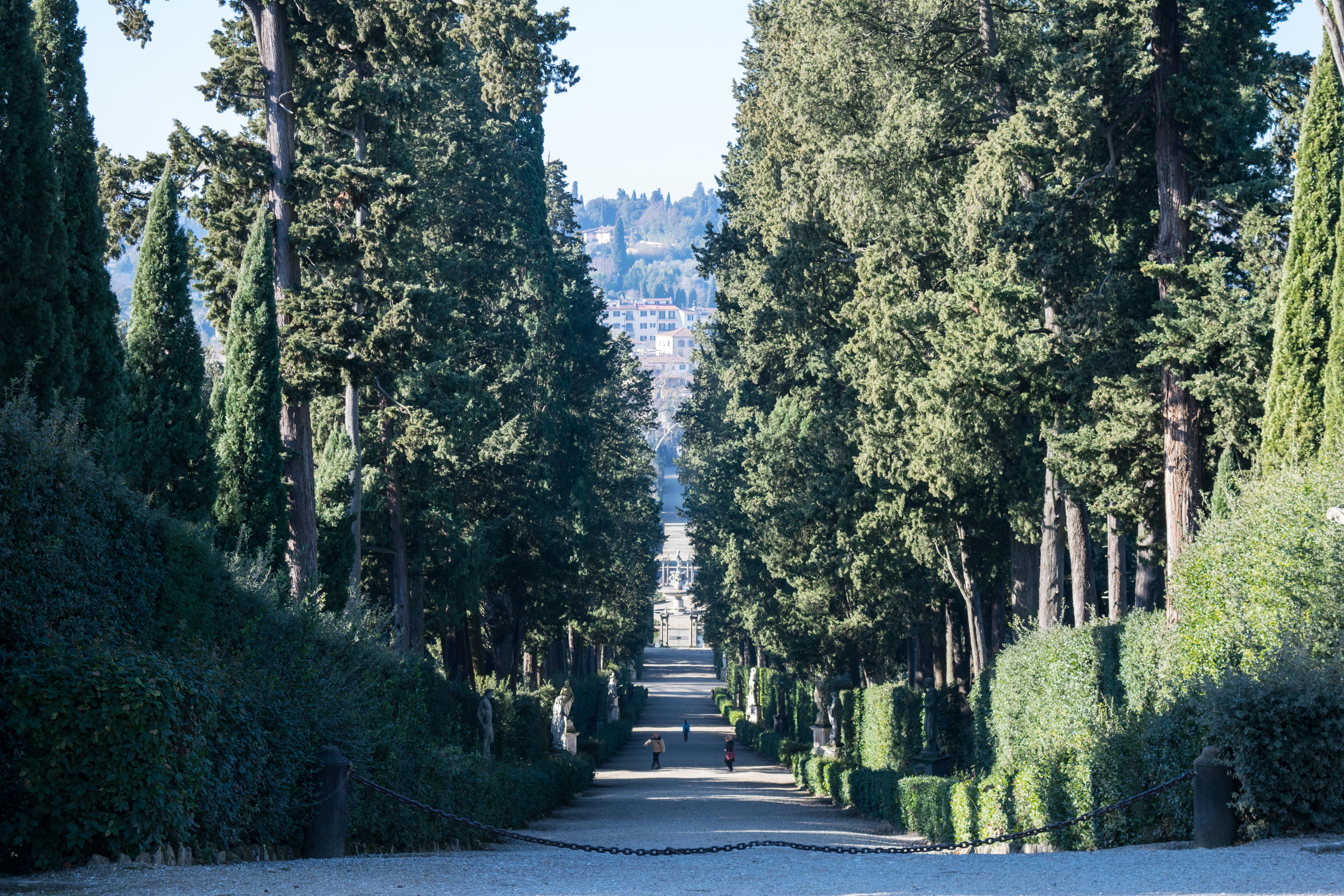

The implementation of principles related to slow tourism and the creation of three urban green itineraries (one focused on the Medici town, one on the medieval components, one on the hills and surrounding environment) has also been connected to the concept of ‘Promenadologie’, the science of strolling, a philosophy to enhance environmental perceptions and experiences through walking. In the case of the Greenway, the ‘Promenadologie’ constitutes an alternative way to experience the connection between the two World Heritage sites, as well as the relations between natural and cultural elements, only by foot or bike. The walk becomes a powerful tool to reflect upon the aesthetic and sensorial qualities of heritage and nature, bridging the gap between visitors and the surrounding environment.
The enjoyment of natural and cultural elements by foot and bike, and specifically through strolls, is made possible thanks to the creation of ad hoc itineraries connecting selected gardens and green areas already known for their aesthetic features. The itineraries connect the Bardini, Boboli and Bobolino gardens, passing through the hills of the Oltrarno district and the Villa di Poggio Imperiale. The walk is further enhanced by the lack of pollution and traffic, placing the well-being of visitors at the core of the project.
The establishment of connections between World Heritage properties, urban and historic gardens, and lesser known neighbourhoods by means of a walking itinerary has proved to be a successful strategy to encourage sustainable and unique journeys. The science of strolling (Promenadologie) allows for the encouragement of slow and green tourism, the economic and sustainable development of different parts of the city outside of the city centre, and the well-being of users, who are not affected by traffic jams or noise and air pollution. Moreover, the itineraries promote a new way to experience the city without being over-stimulated by sensorial inputs, activities and information in the historic centre, fostering a simpler and internal reflection on the dualism of man/nature.